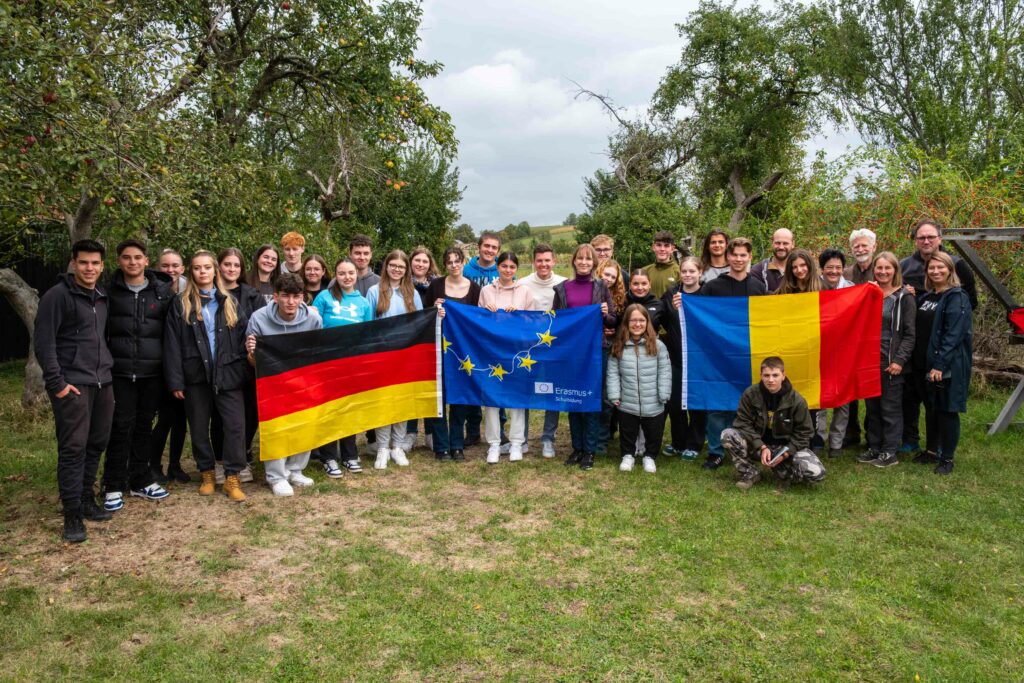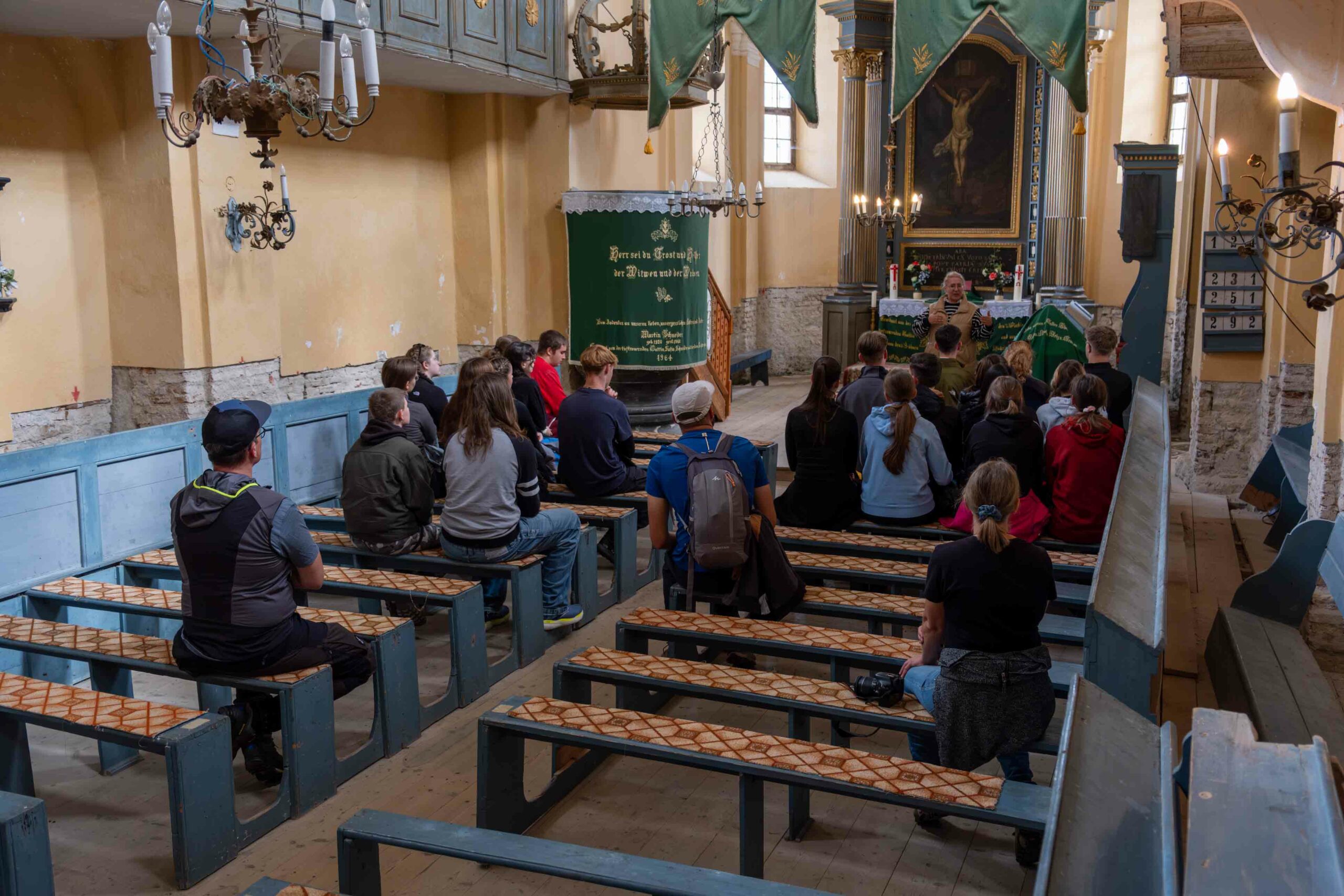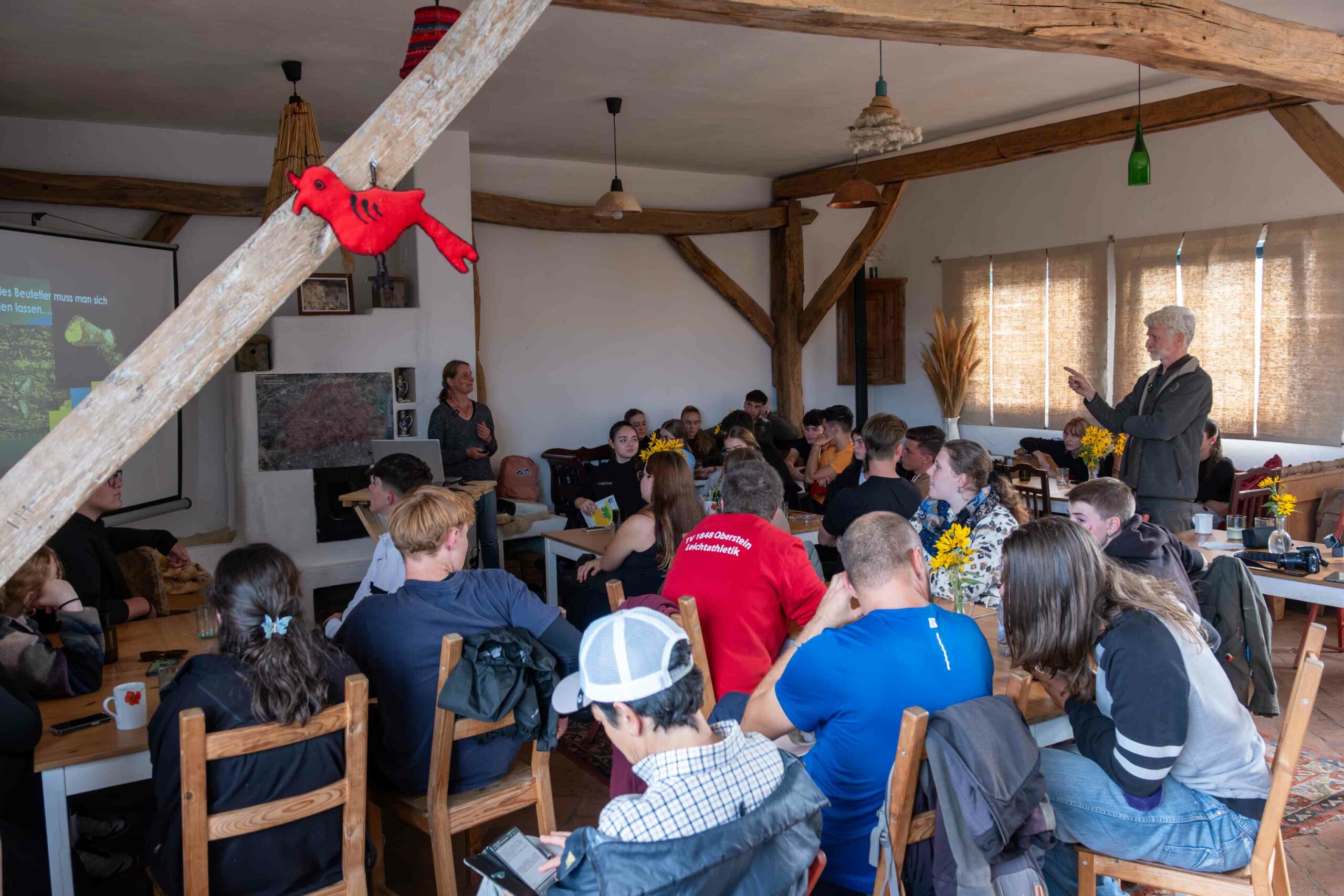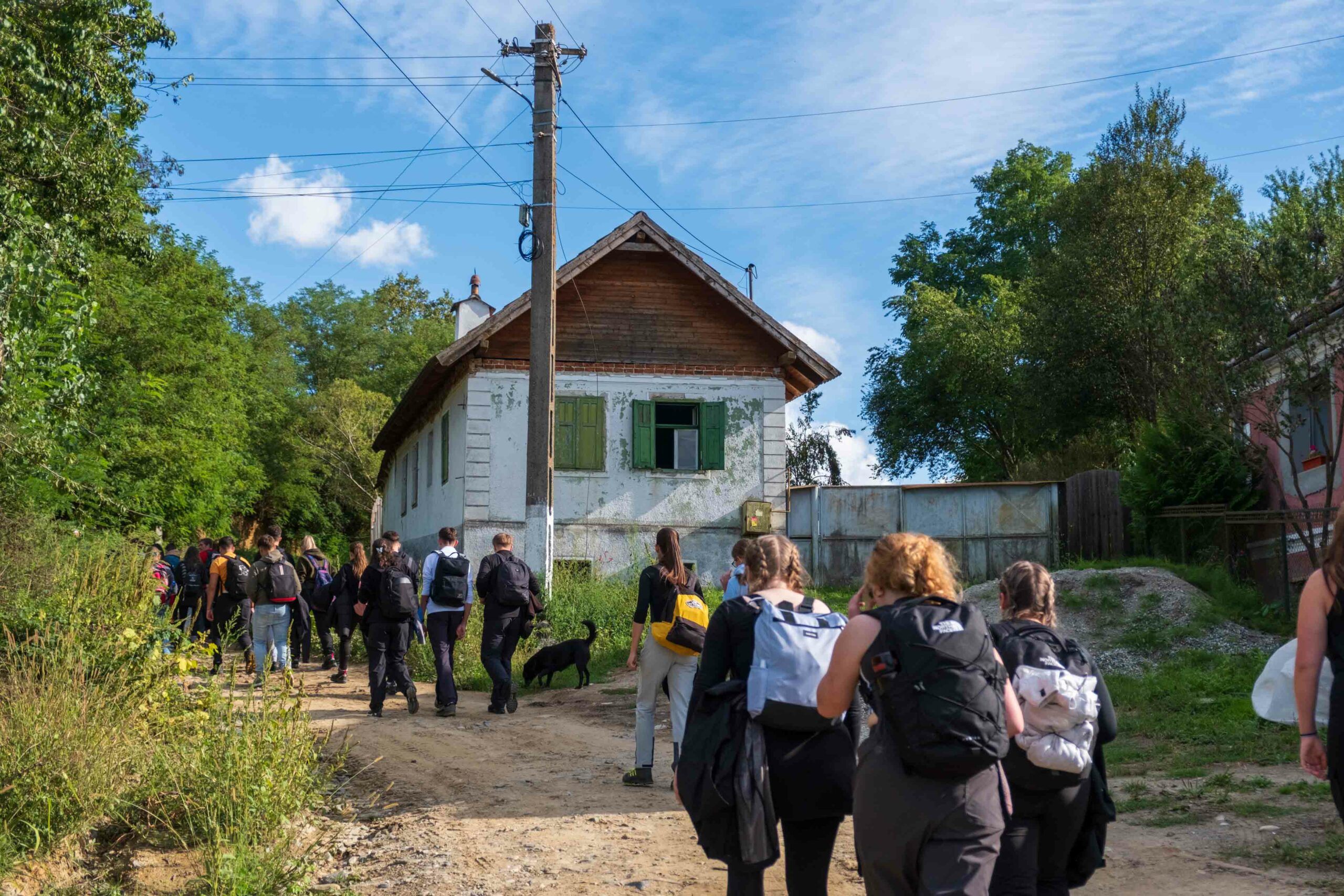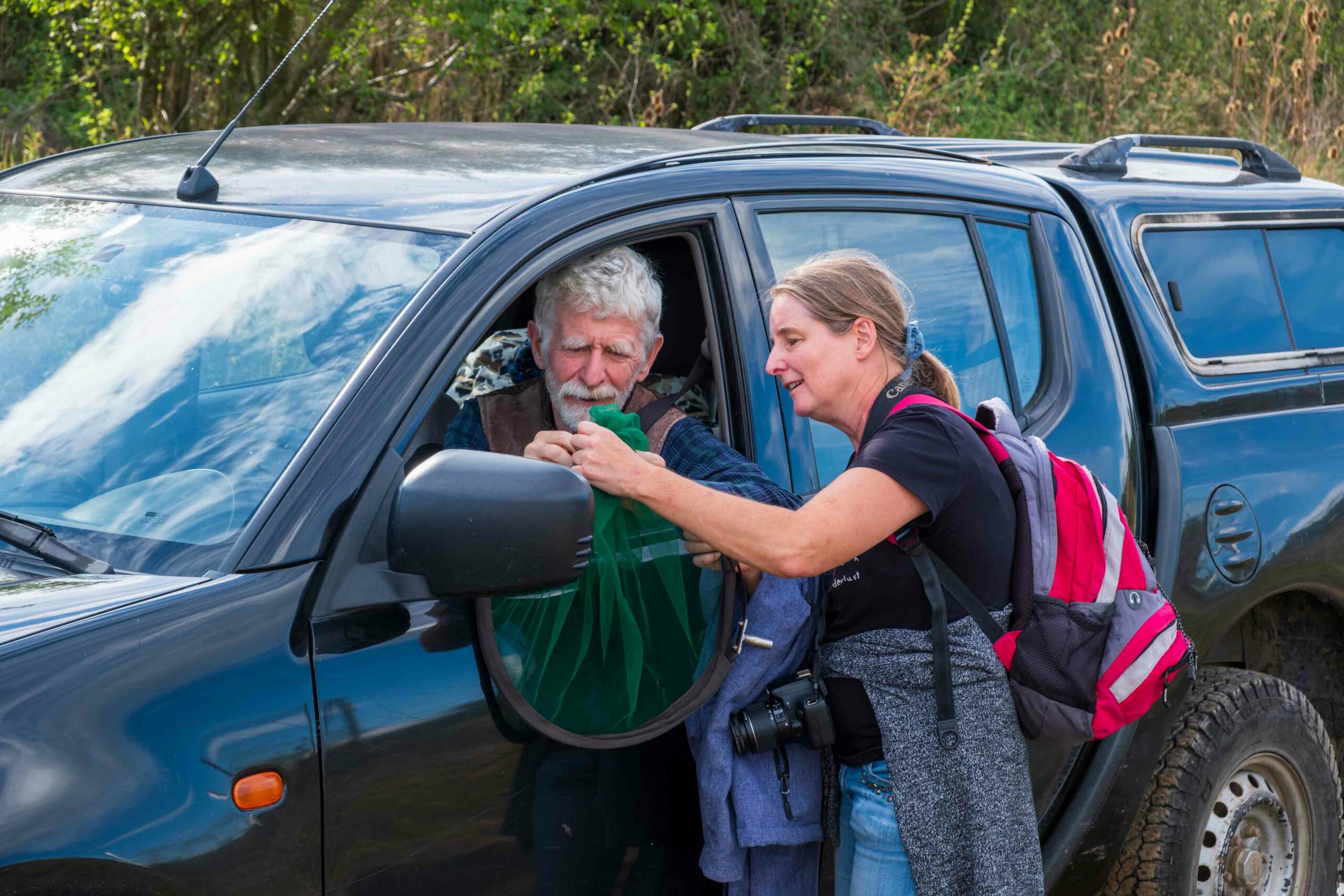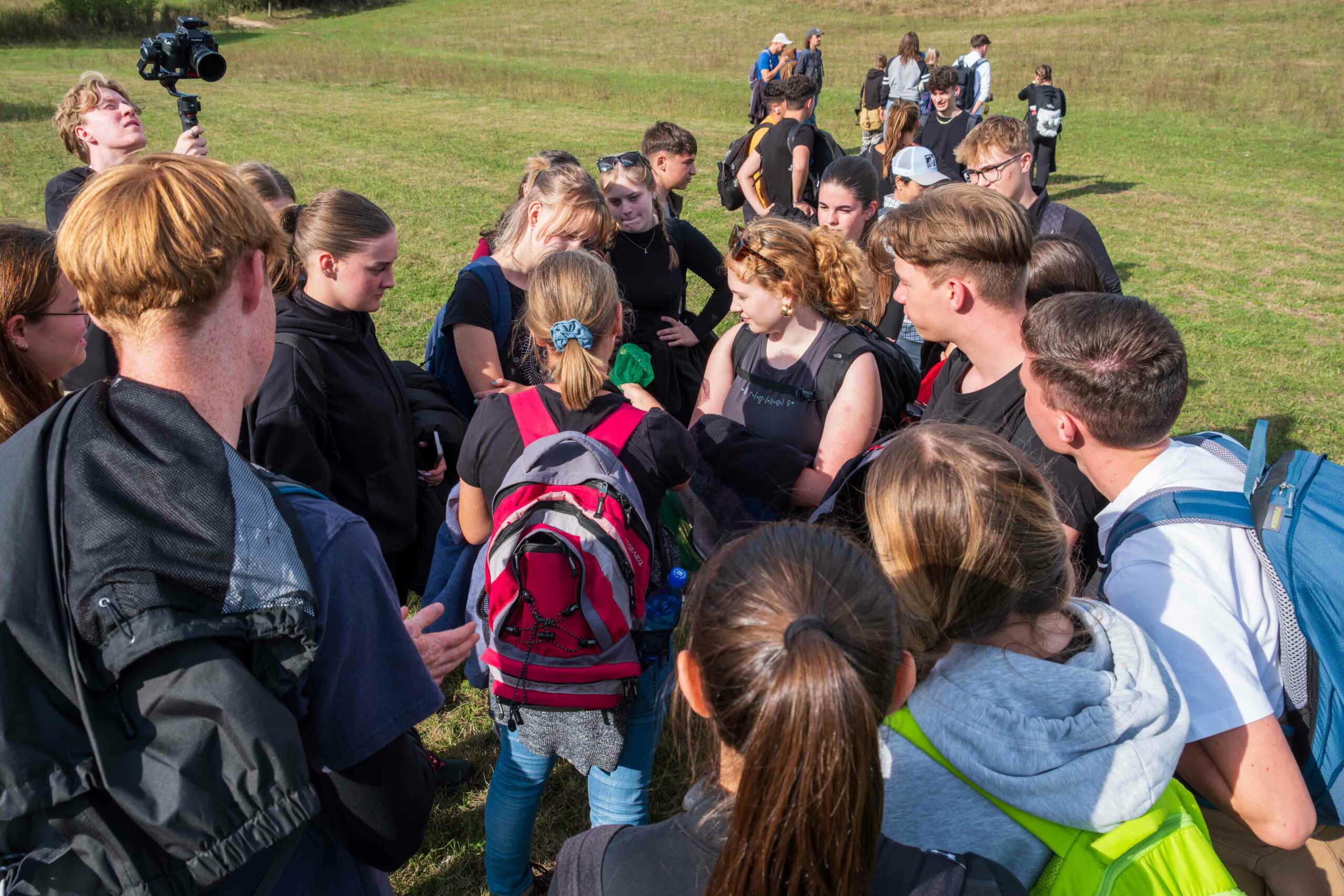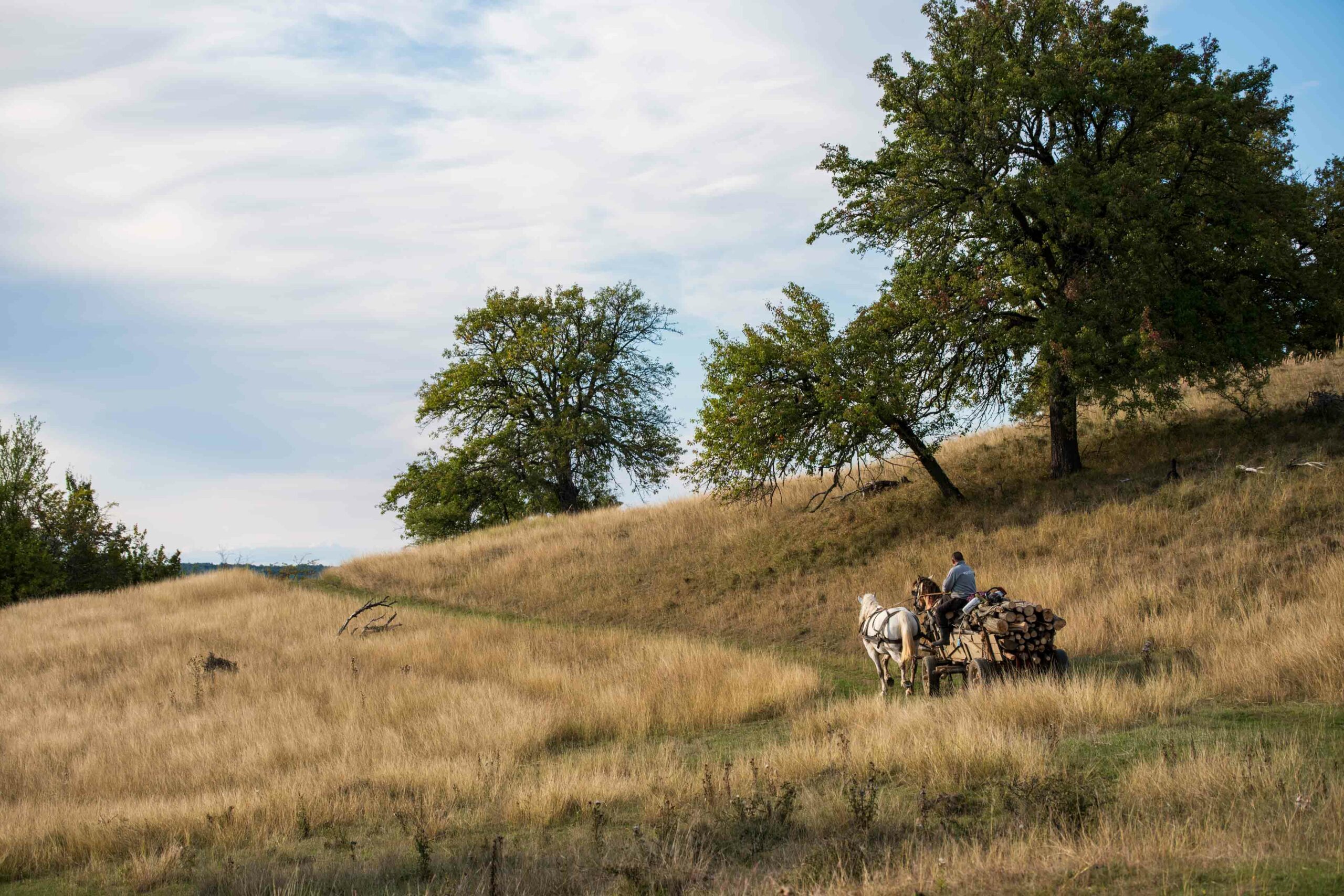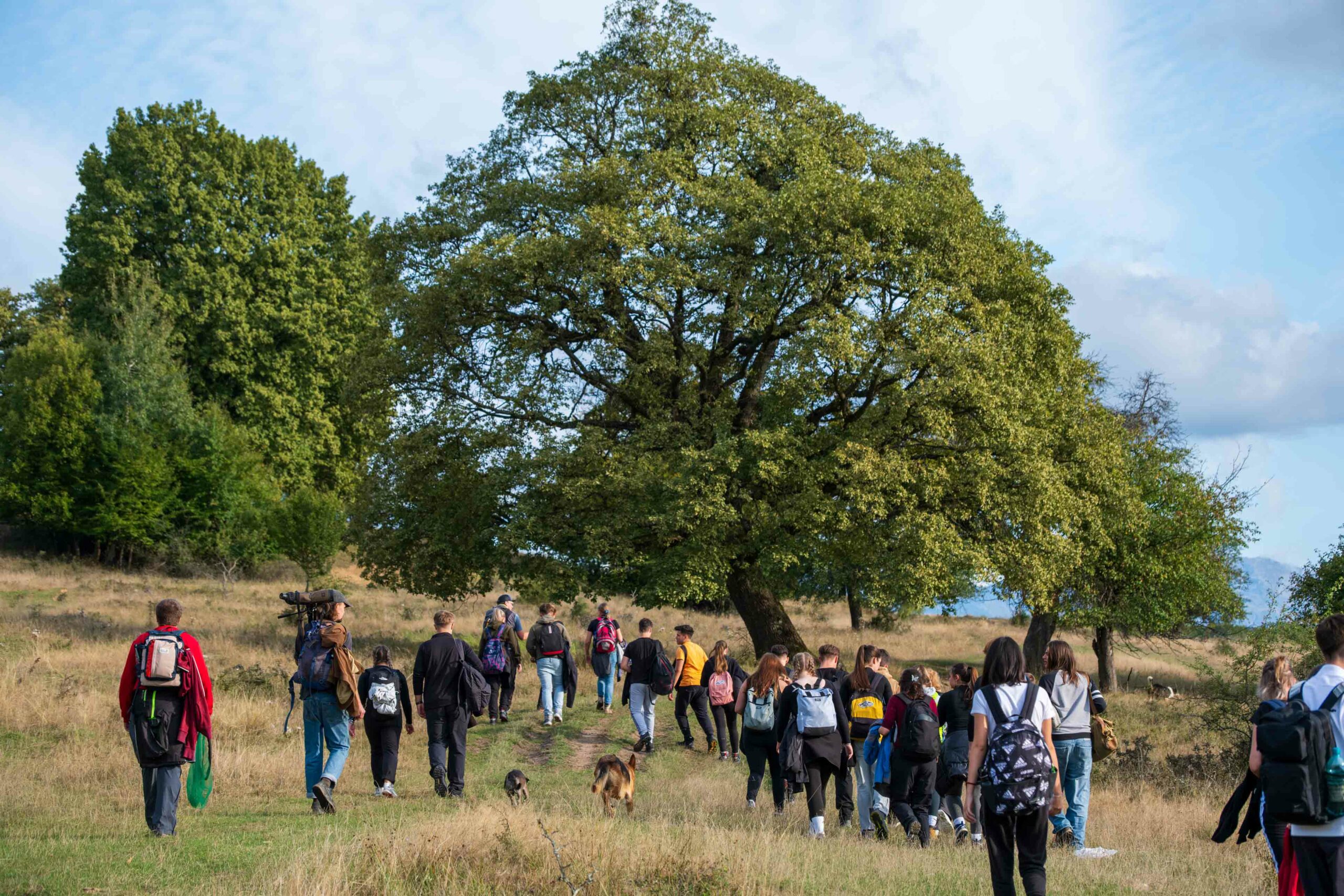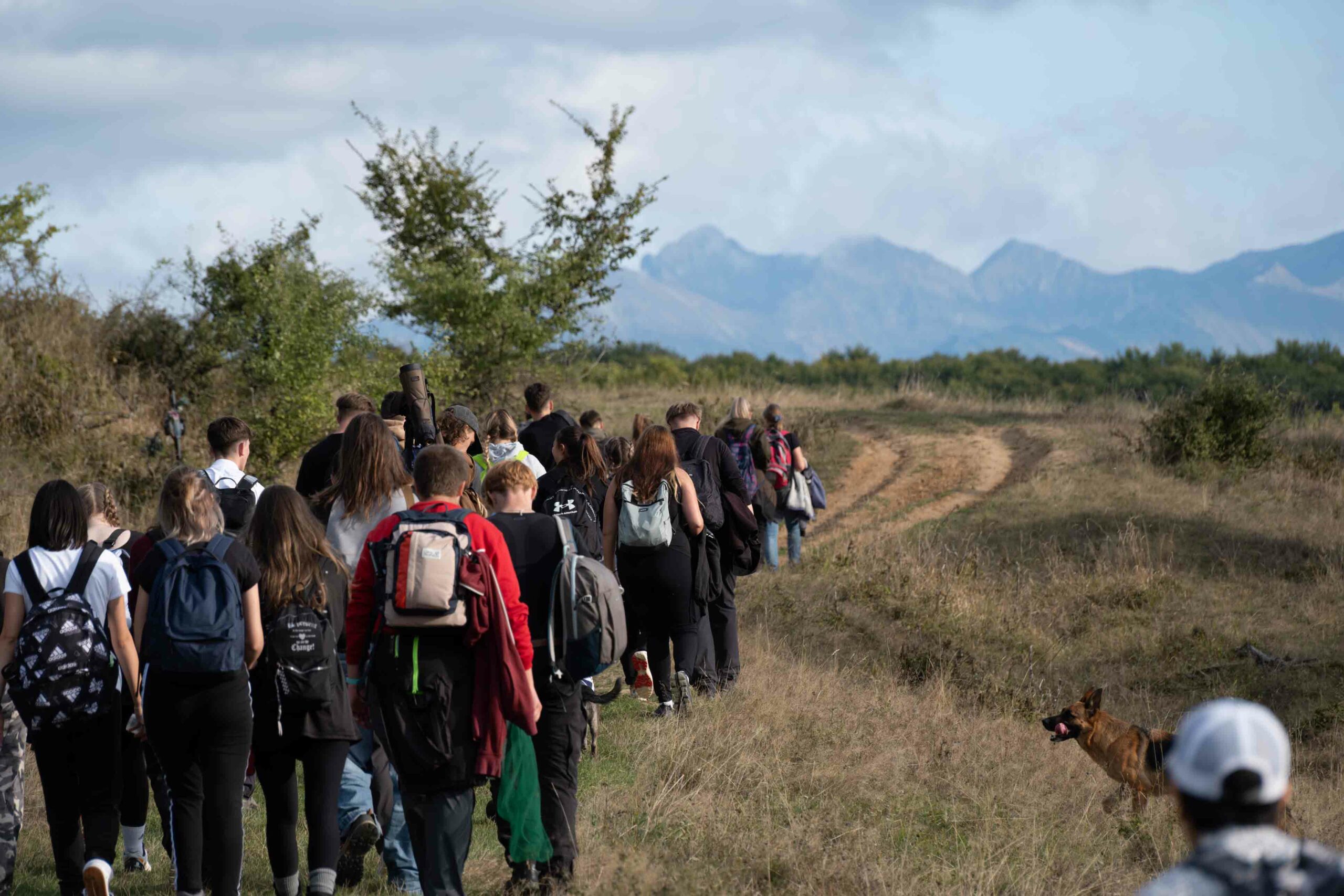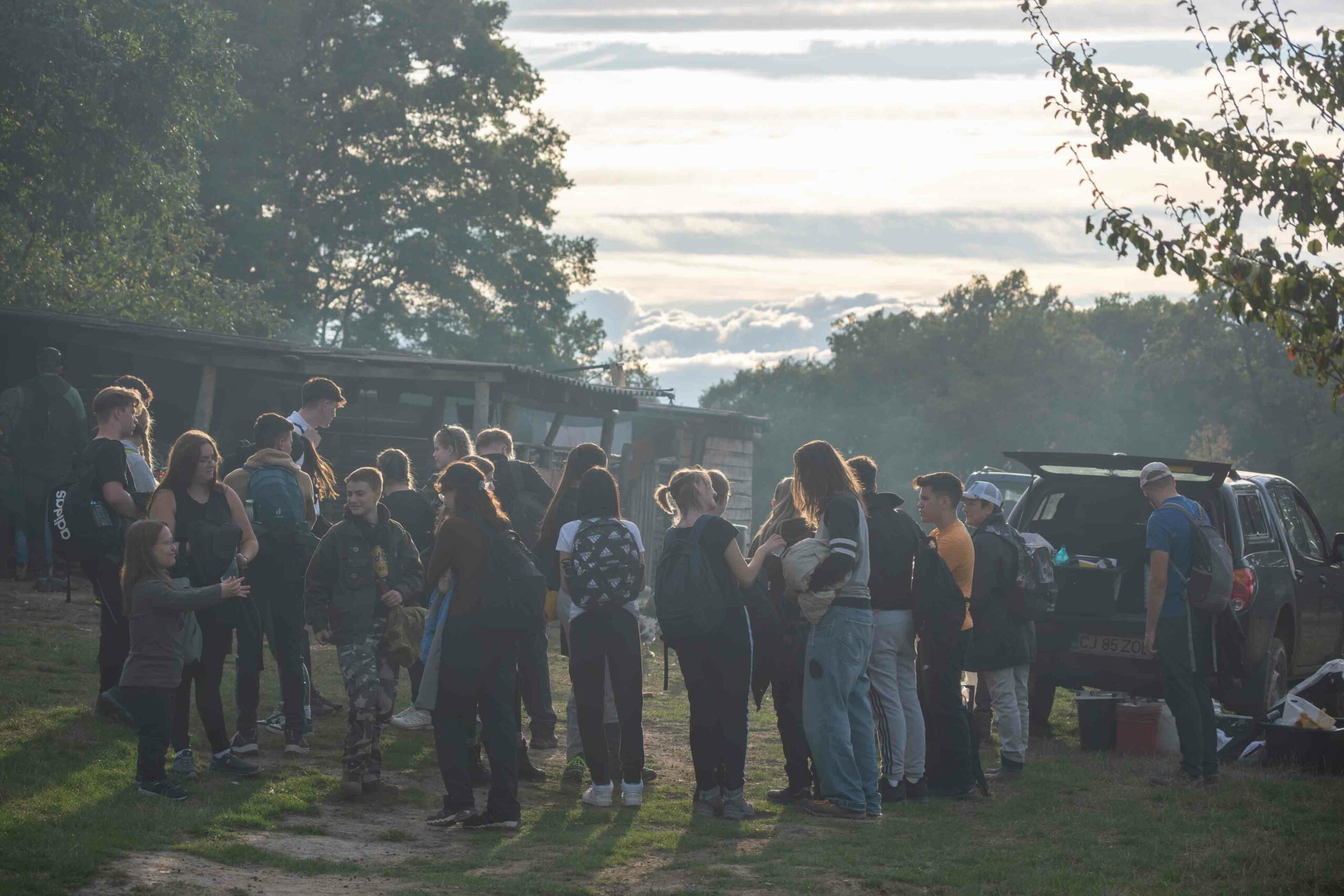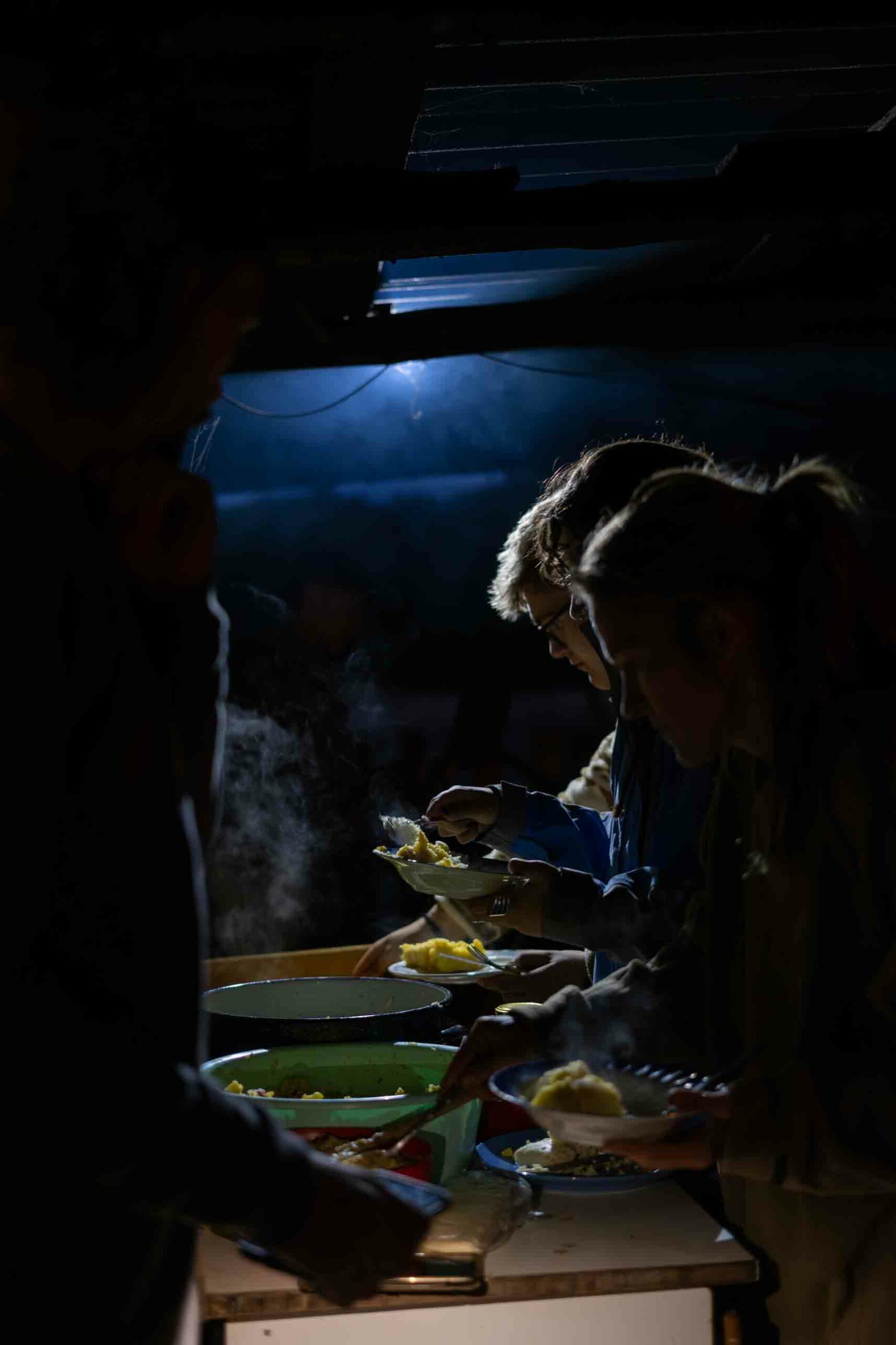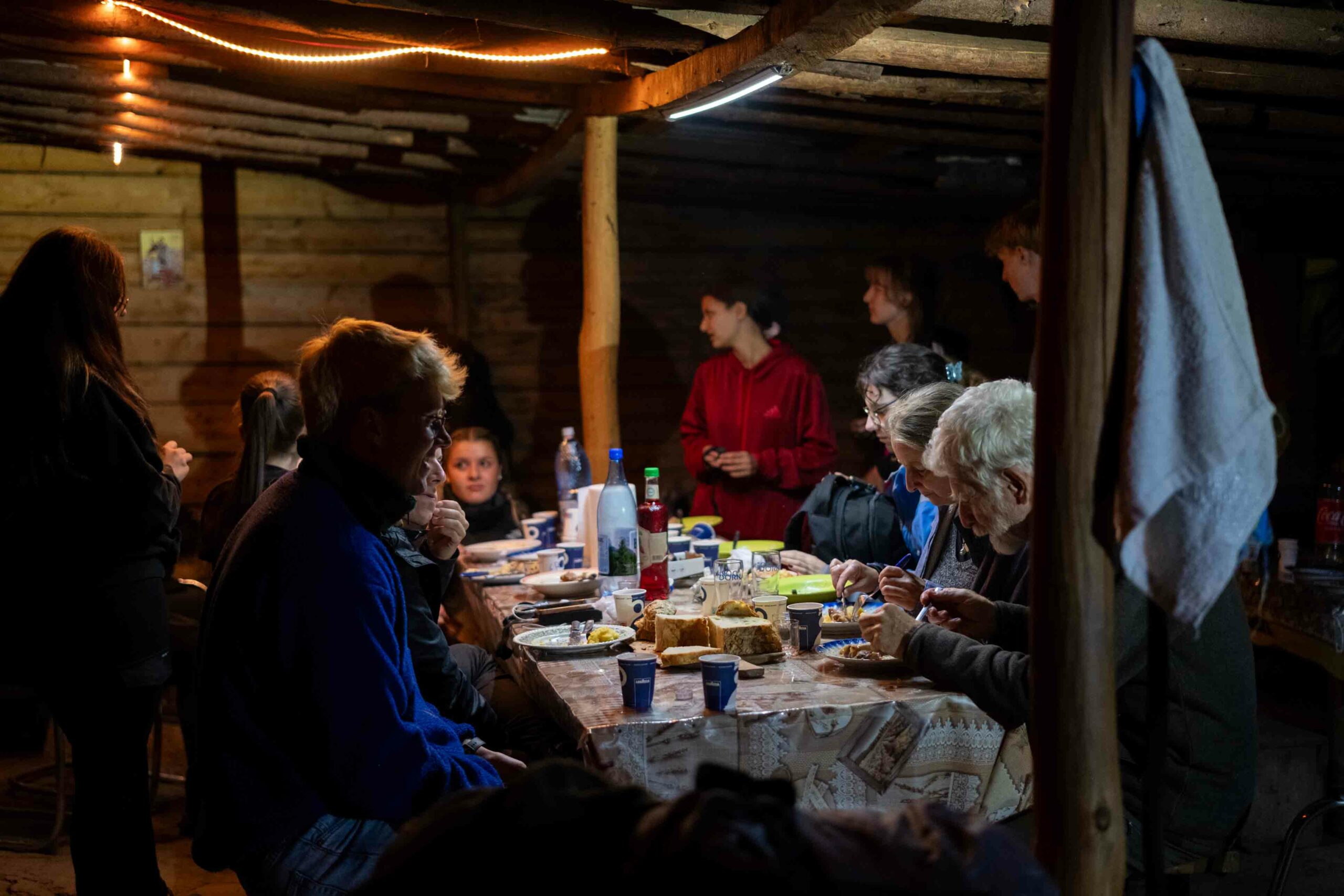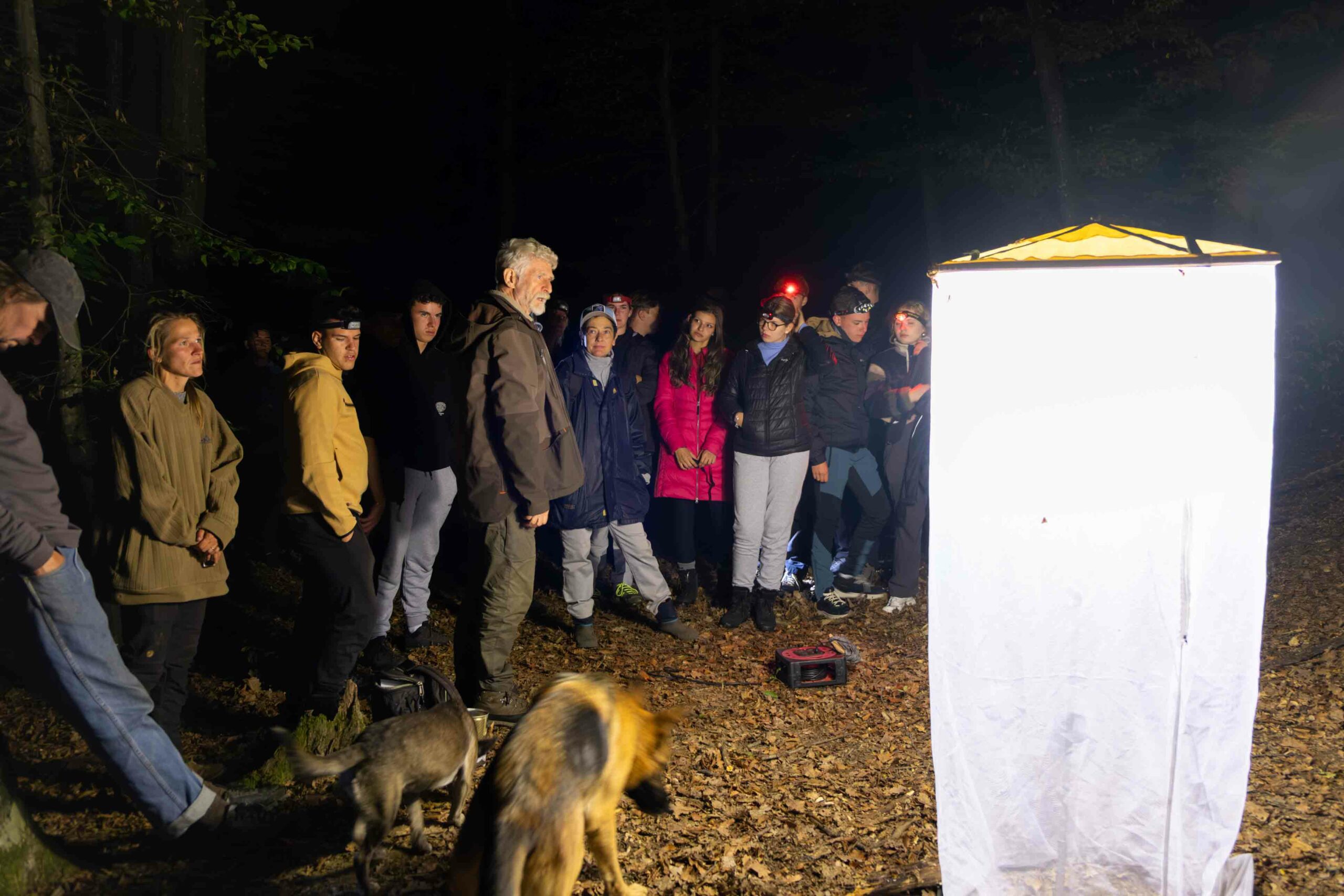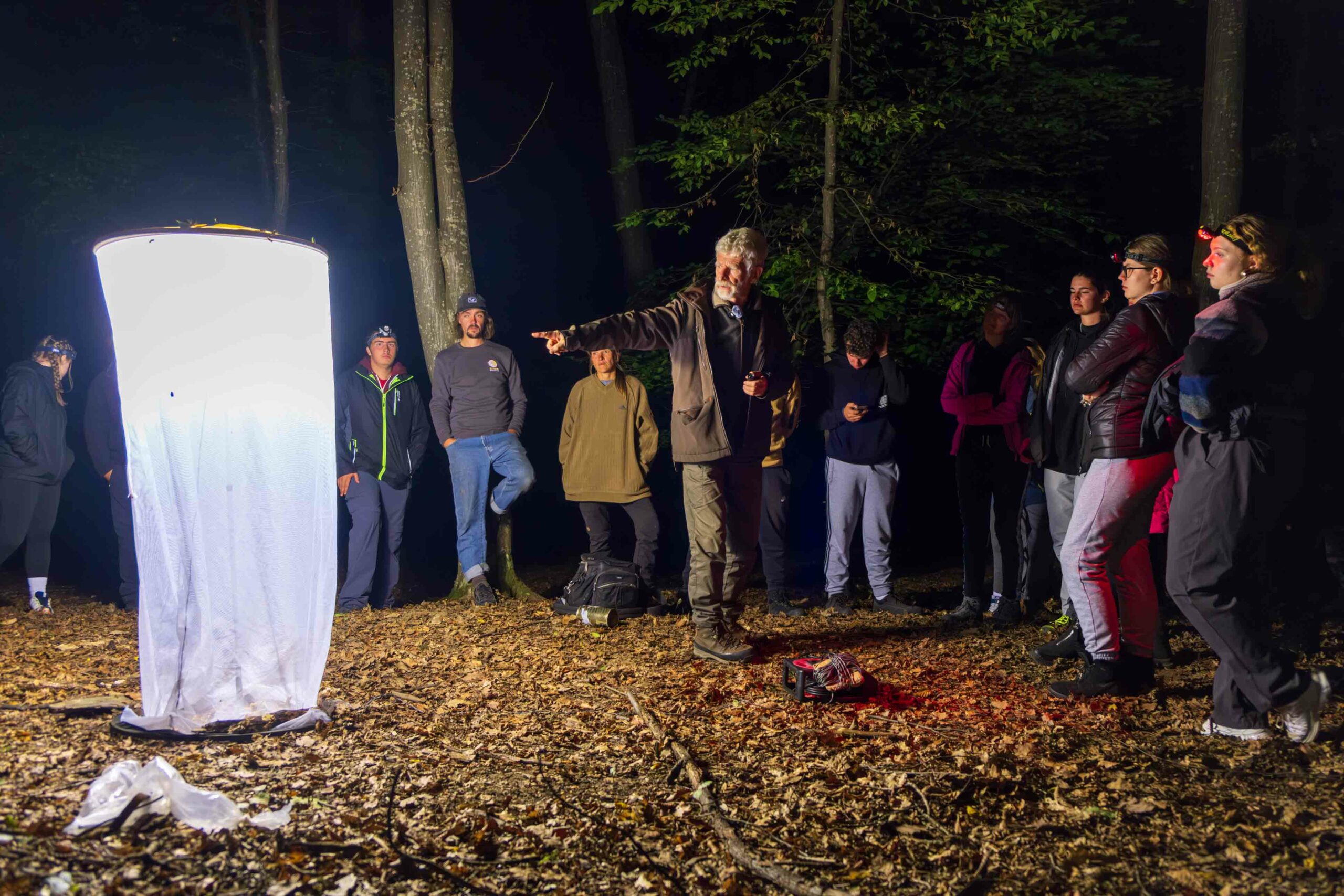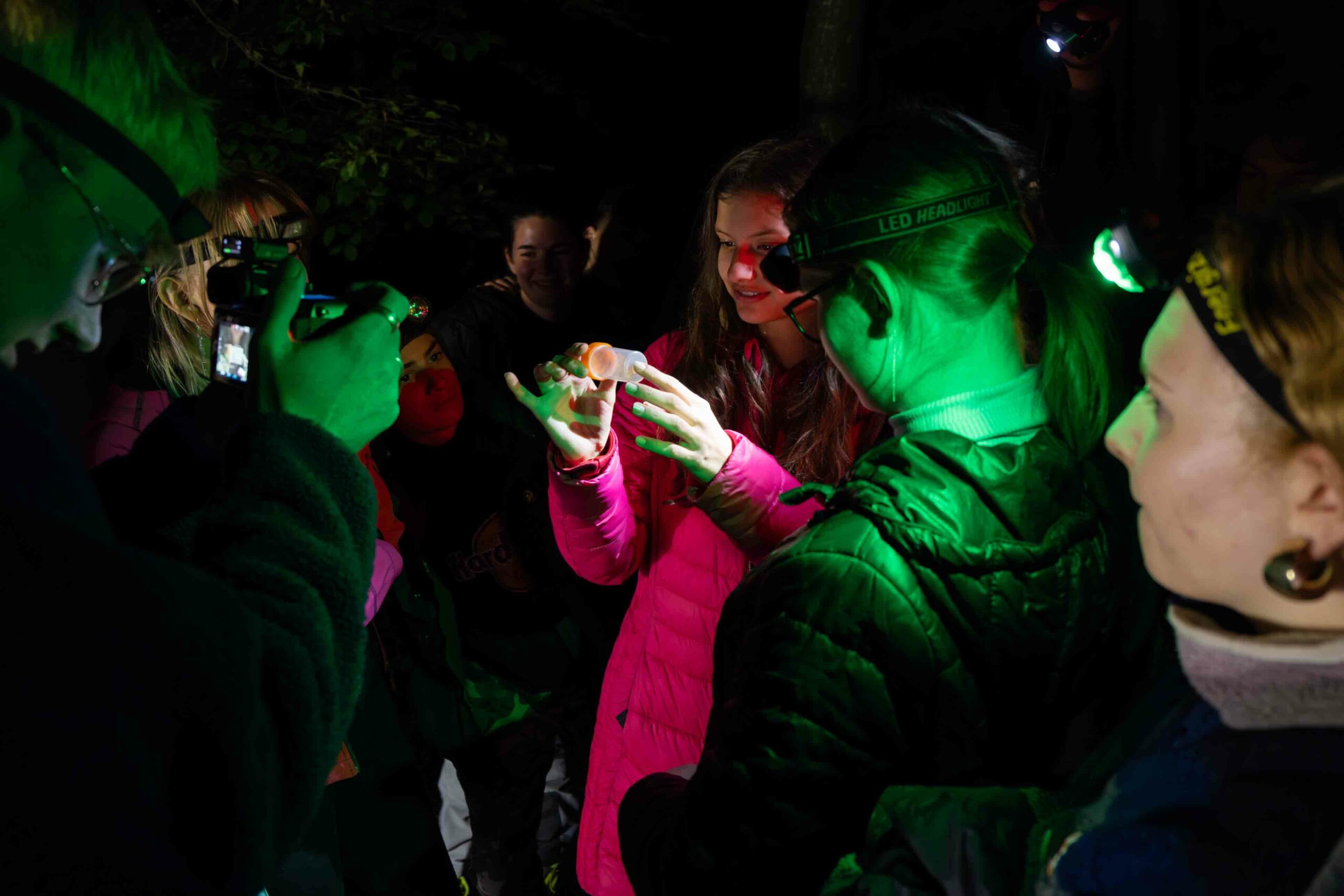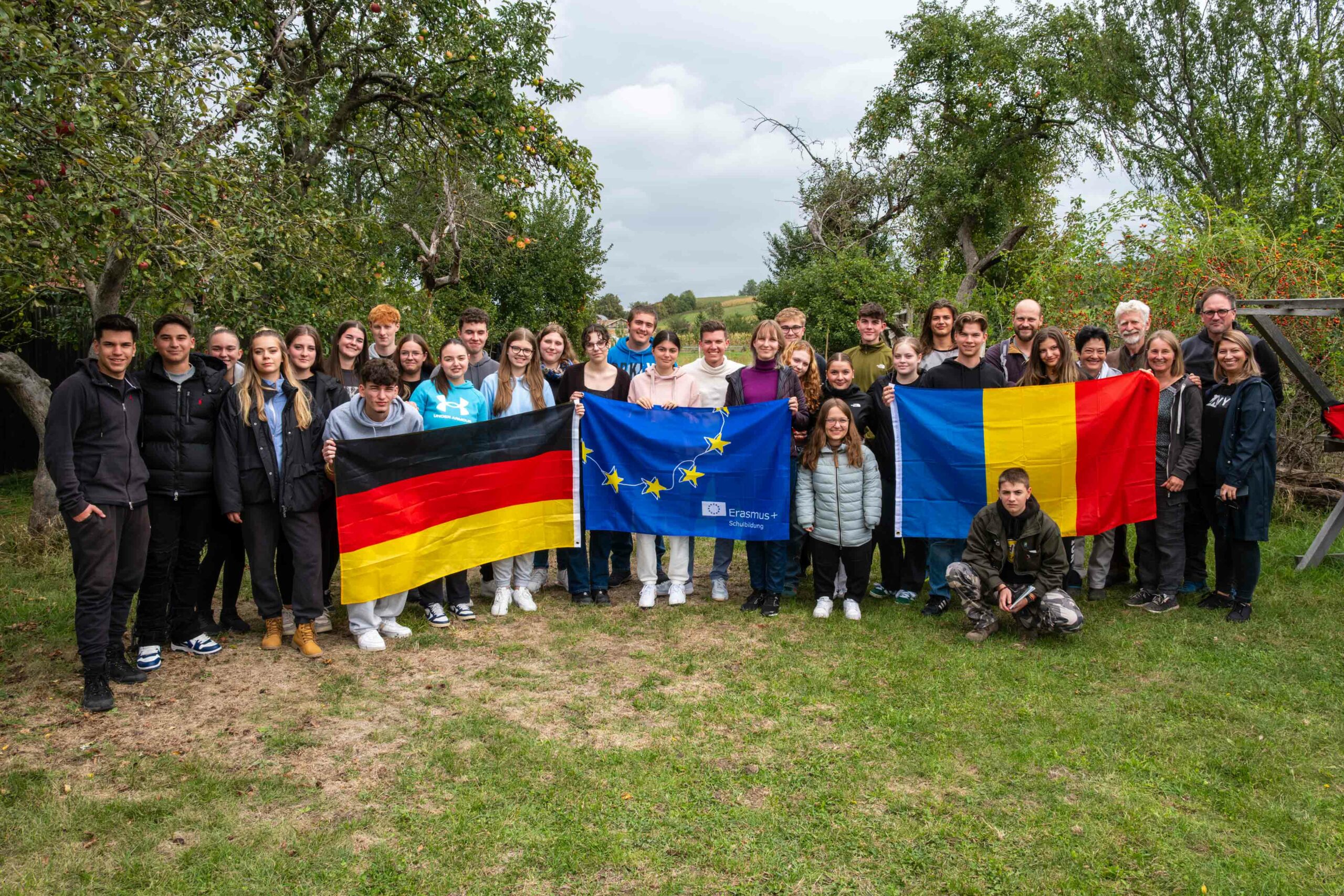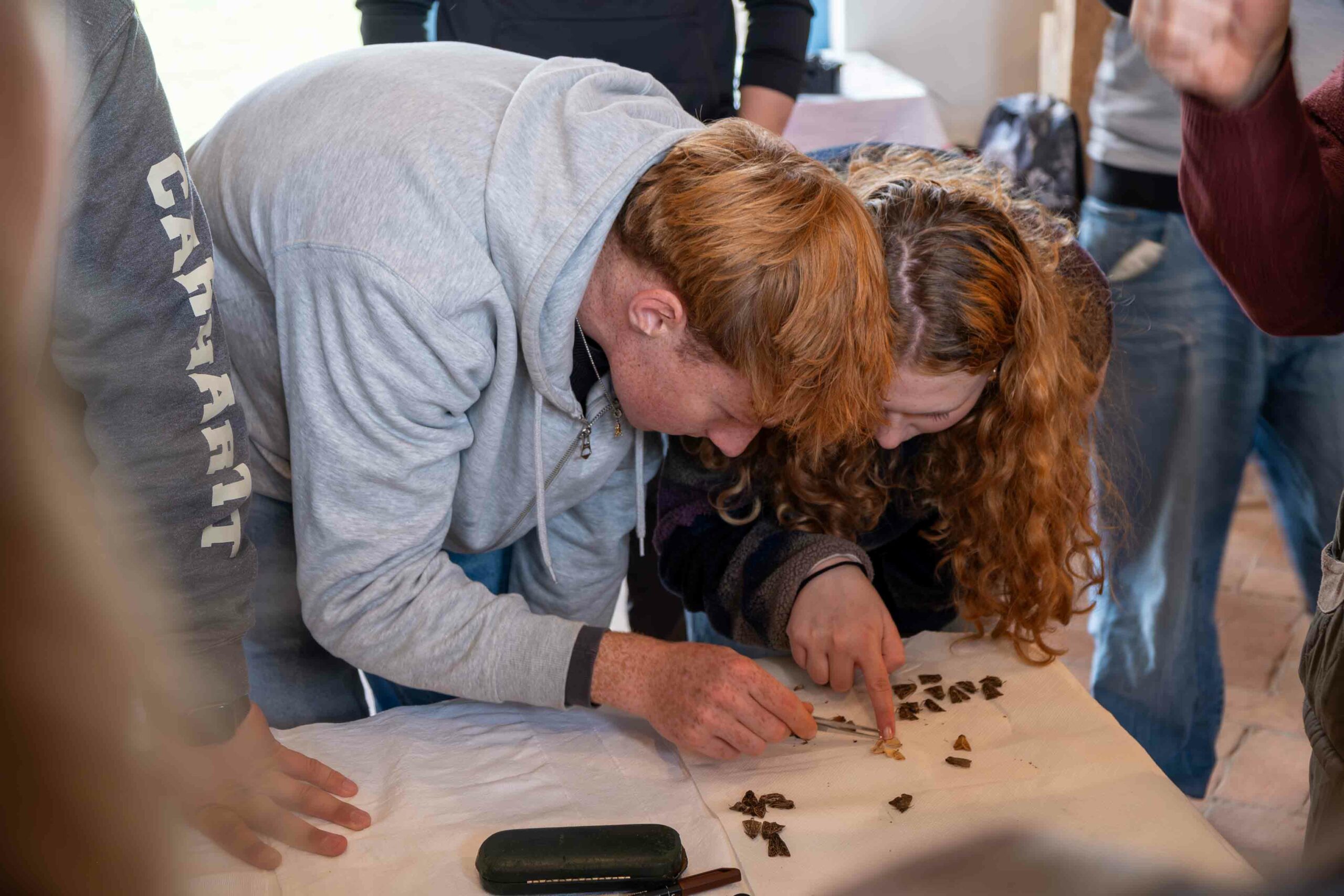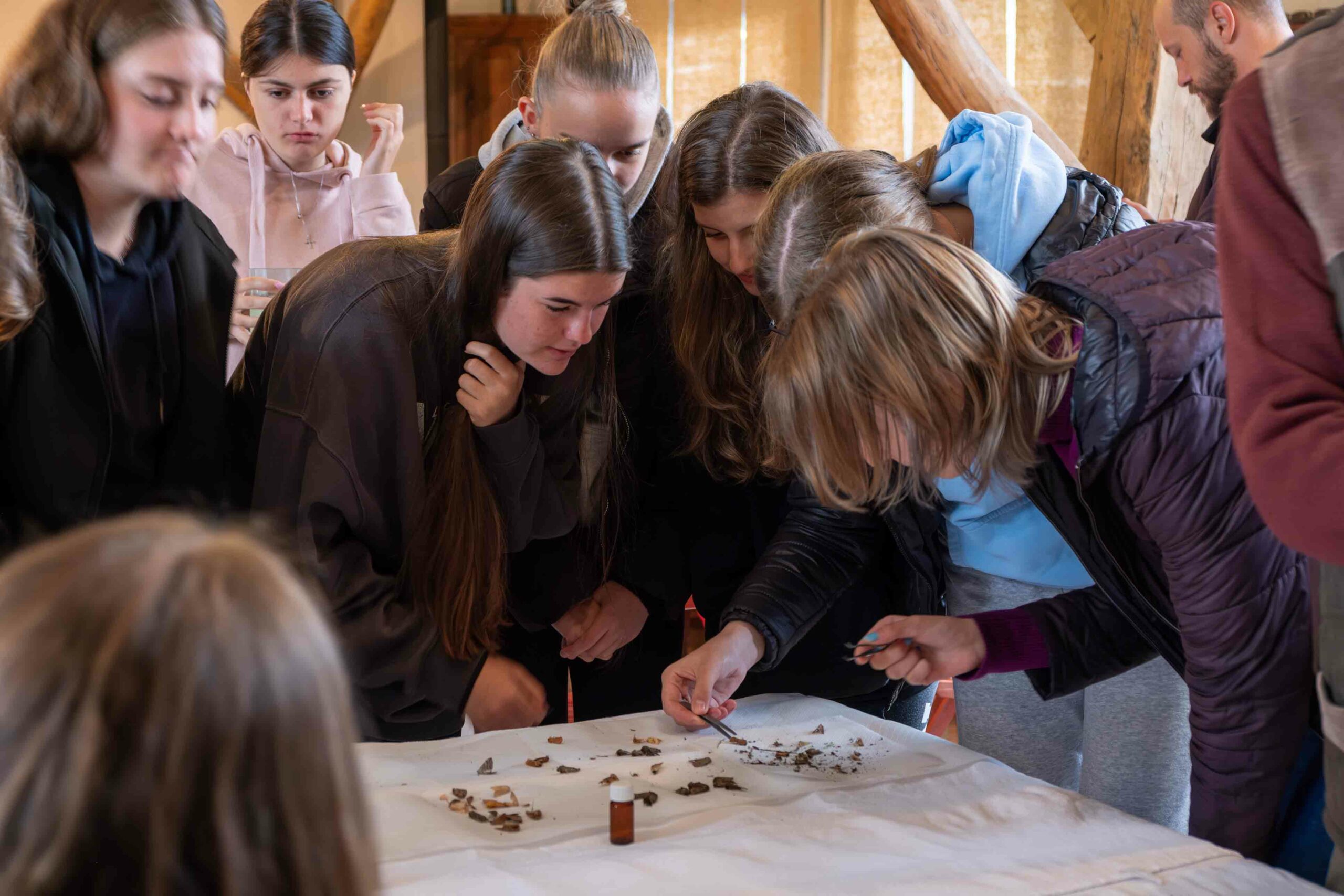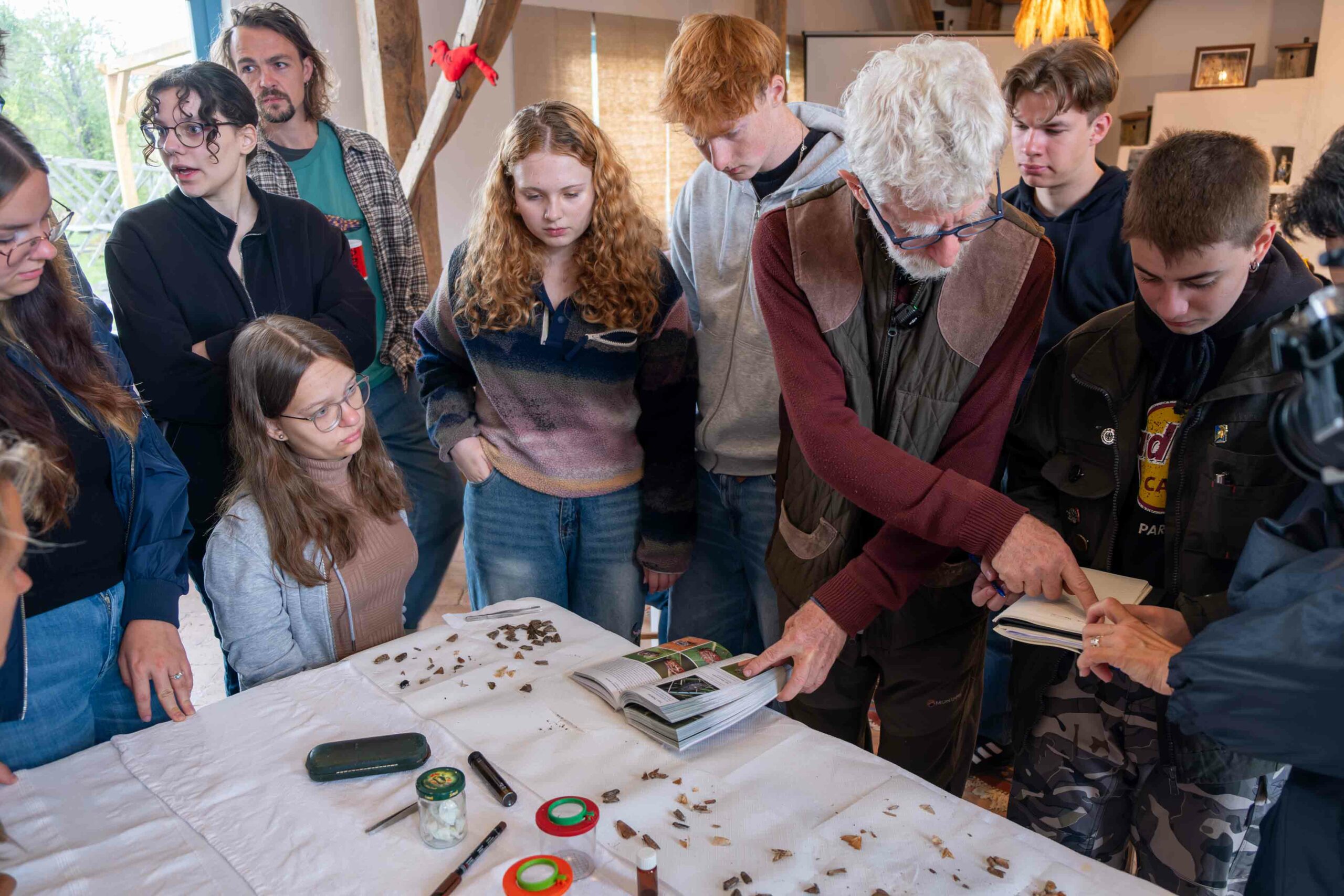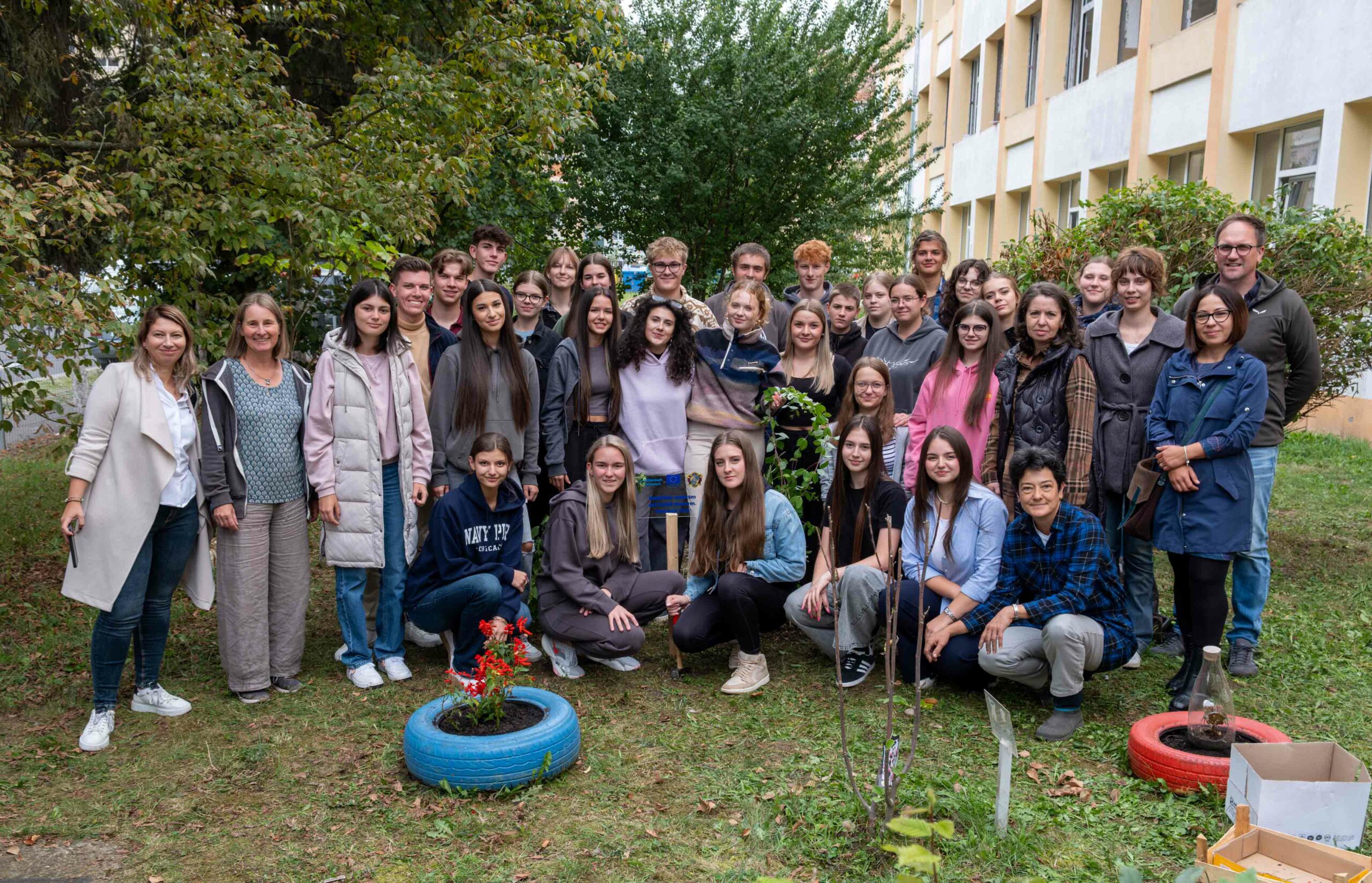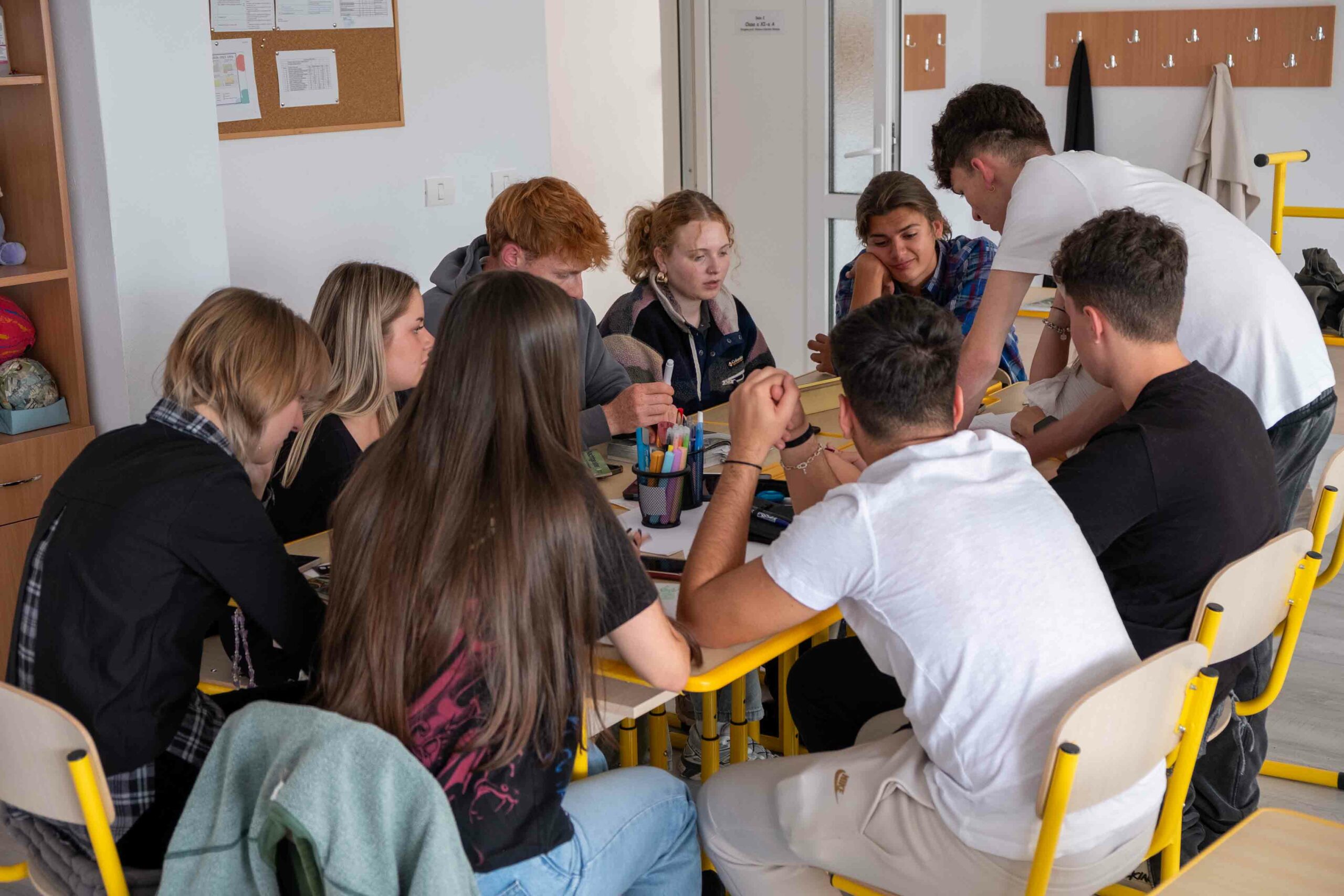Once again, a small team from IfaS (Trier University of Applied Sciences, Germany) travelled to Romania as part of our project. The reason for this trip was a cooperation between the DBU-funded wood-pasture project and the Erasmus student exchange programme between the Göttenbach-Gymnasium (Idar-Oberstein, Germany) and the Colegiul National Pedagogic Andrei Saguna (Sibiu, Romania). From 15 to 18 September, our video team accompanied the excursion and field biology work led by Prof. Dr. László Rákosy together with the students. The goal was to work out the extraordinary value of the wood-pastures still preserved in Romania. For this purpose, the species diversity of moths was to be analysed. At the same time, the students learnt some basics about video production and were able to lend a hand in the recording process.
On Monday (16 September), an introduction took place first. Viktoria Luft (Peisaj Deschis) explained to the students the characteristics of the cultural landscapes in the region around Sibiu. Prof Rákosy gave an initial overview of the world of butterflies and moths. The group of students, teachers and some members of Peisaj Deschis then set off on the excursion to the wood-pasture near Hosmann (Sibiu County). On the way, the students already caught and examined butterflies and other small animals they came across. Later, Prof Rákosy showed how the traps for moths are set up. These included a light trap, which uses a bright lamp to attract the moths, and bucket traps, which use UV light to lure the moths into a bucket. For those moths that cannot be baited by light, Prof Rákosy coated some trees with a self-mixed bait. The traps were placed partly in the wood-pasture and partly in the forest in order to be able to distinguish the species diversity of the different landscape forms later on. After eating something with the local shepherd, the traps were analysed for the first time at around midnight. Despite the difficult conditions (a cold and bright night due to the full moon), some butterflies could already be observed.
The following day (17 September) the captured moths were analysed. Prof Rákosy explained to the students how the moths are sorted and then identified with the help of an identification book. The students captured over 25 different species. Unfortunately, as Prof. Rákosy had already expected, it was not possible to highlight the species diversity of the wood-pastures. He emphasised that the site would have to be surveyed several times a month throughout the season to be able to prove this. However, the message is clear: insects, such as moths, are extremely important for our ecosystems. They are responsible for the fruit and vegetables on our plates. And nowhere are they more abundant than in wood-pastures. It is therefore important to understand the value of these cultural landscapes and thus ensure their continued existence.
On the last day (18 September), our video team accompanied the students’ planting project on the grounds of the Romanian exchange school in Sibiu. A number of different shrubs were planted that are particularly attractive to butterflies and moths. In this way, the students made a small contribution to enriching biodiversity in the city between concrete and asphalt. In the afternoon, the students used the time to document their results and experiences. They worked on various forms of presentation, such as a newspaper article, roll-ups/posters and a children’s book for playful learning.
Our project team from Germany was also able to gather many new insights and experiences during the days, as well as a lot of video footage and images. A selection of the pictures can be seen below. Some video formats of this trip will follow in the near future.

